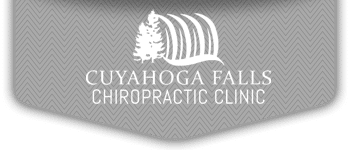Finding Relief from Pain with Interferential Current Therapy

Finding Relief from Pain with Interferential Current Therapy

Updated on November 21st, 2019 by Dr. Ryan Meehan
Since the 18th and 19th centuries, we have been using electrical muscle stimulation in the medical and healthcare field. In more recent history, EMS has been incorporated into rehab therapy as a way to relieve pain and stimulate muscles.
Interferential current therapy is the most common type of EMS used in physiotherapy and rehab clinics. It effectively provides pain relief and promotes healing for injured muscles. If you’re wondering how interferential current therapy can help as you work towards recovery, keep reading. We’ve put together some basic information on how ICT therapy works, the advantages of implementing ICT, and the conditions which it can treat.
What is Interferential Current Therapy?
Interferential current therapy (ICT, or sometimes IFC) is the most common type of electrical muscle stimulation used to treat chronic pain resulting from surgery, injury or trauma. The end goal for using ICT as part of a physical therapy or rehab program is to relieve pain and help patients heal faster.
This non-invasive, drug-free therapy has minimal side effects. By utilizing higher frequency energy than other forms of EMS, ICT goes past the surface of the skin. It penetrates deep into the body to target the source of pain, without causing discomfort.
How Does It Work?
Interferential current therapy works by sending small amounts of electrical stimulation to damaged tissues in the body. The therapy is meant to boost the body’s natural process for responding to pain, increase blood flow and the production of hormones that promote healing.
ICT delivers stimulation through two different frequencies, one of about 4000Hz and the other varies up to 400Hz. When the two currents cross, the difference in frequency creates interference, which is where the name for the therapy originates. The exact frequencies, and resulting interferential frequency, can be controlled by the physical therapists during the session.
The interferential current is able to travel deep into the muscle tissue or nerves for targeted treatment. This combination effect is also what makes ICT a strong form of therapy without some of the uncomfortable sensations associated with low-frequency stimulation.
Conditions Treated with ICT
ICT is often used to treat muscle strains, spasms, sports injuries, joint damage, and edema. This therapy can provide relief from and chronic pain caused by arthritis, surgery, muscle damage, or an injury, and from symptoms like inflammation and swelling. IFC is often used in combination with chiropractic care and physiotherapy as part of a comprehensive treatment plan for these conditions.
Treatment targets areas of the body to help alleviate soreness, promote healing and a quick recovery. Stimulation can be delivered deep into the tissue in localized areas including:
- Neck,
- Back,
- Shoulder, and
- Knee.
In some cases, interferential current therapy is incorporated as part of a patient’s pain management program.
The Advantages of Interferential Current Therapy
This type of stimulation releases endorphins to promote recovery while increasing blood circulation to the area to support the body’s natural healing process. ICT helps decrease swelling and inflammation and reduce or eliminate pain. It can also increase joint mobility and range of motion.
What Patients Should Expect with ICT
Though it may sound like a complicated or uncomfortable treatment, ICT is safe and painless. In fact, most patients say that they feel less discomfort and side effects with ICT than with other types of electrical stimulation. Most describe the experience as a tingling or ‘pins and needles’ sensation on the skin.
Interferential current therapy usually requires sessions with a duration of about 9 to 15 minutes. During this time, the physiotherapist will attach four electrode pads to the area which will be treated. Wires connect the pads to the current intensity regulator device which delivers the frequencies required.
When Interferential Current Therapy Is Not Recommended
This type of therapy is not advised for young children, women who are pregnant, and patients with pacemakers or severe health conditions.
Find out how to speed up recovery and get better results by Combining Chiropractic Care and Massage Therapy.
Get Relief from Pain in Cuyahoga Falls
Learn more about the full range of Physiotherapy & Rehab Services that our team provides at the Cuyahoga Falls Chiropractic Clinic. Contact our office to schedule a consultation.

